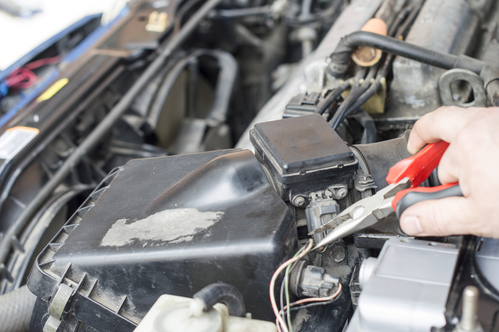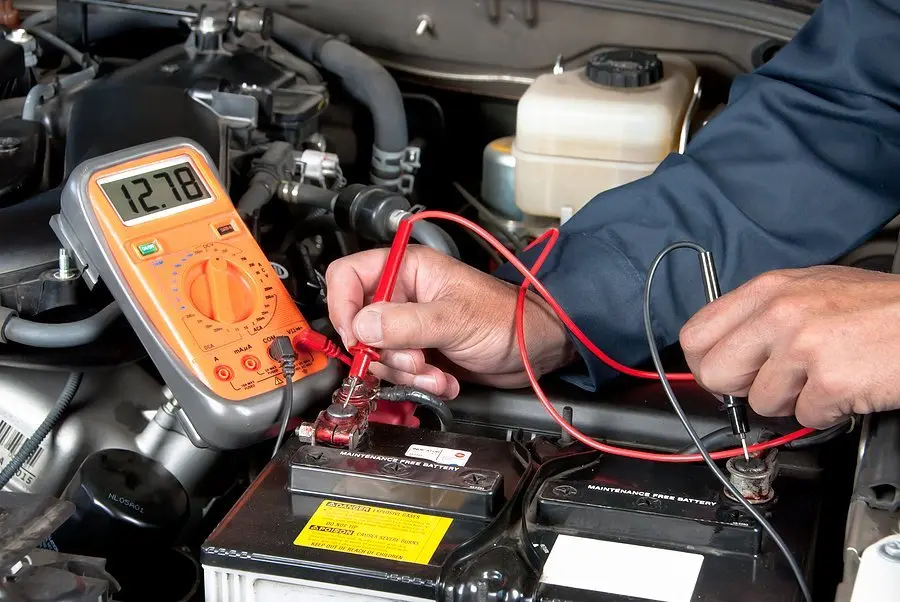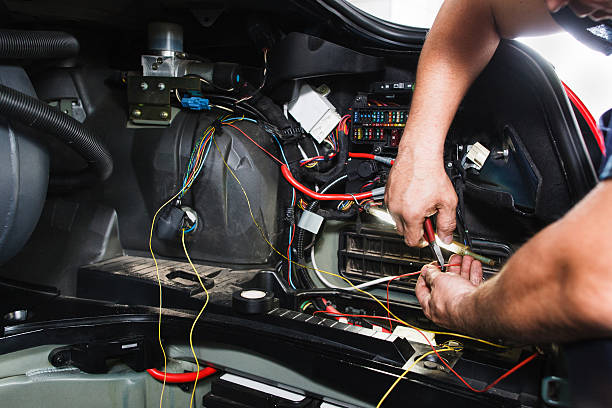Car wiring is a complex network of electrical connections that power various components of a vehicle. When this wiring system fails, it can lead to a variety of issues ranging from minor electrical malfunctions to complete system failure. While some car wiring issues require the expertise of a professional mechanic, many can be repaired at home with the right tools and knowledge. In this blog, we will provide a step-by-step guide on how to repair car wiring.
Step 1: Identify the problem The first step in repairing car wiring is identifying the problem. Common signs of a wiring issue include flickering lights, malfunctioning gauges, and blown fuses. Once you have identified the issue, you can begin the process of repairing the wiring.

Step 2: Gather the necessary tools and materials To repair car wiring, you will need a few essential tools and materials, including a multimeter, wire strippers, electrical tape, a soldering iron, and replacement wires and connectors. It is essential to have the correct size and gauge of wire for the repair.
Step 3: Disconnect the battery Before beginning any wiring repair, it is crucial to disconnect the battery. This step ensures that you will not accidentally short-circuit any wires and prevent the risk of electrical shock.

Step 4: Locate the damaged wires The next step is to locate the damaged wires. This may require some dismantling of the car’s interior or exterior panels to gain access to the wiring. Use a multimeter to test the wires and locate the damaged section.
Step 5: Cut and strip the damaged section Once you have located the damaged section, use wire strippers to cut and strip the damaged wire section. It is essential to leave enough wire length for splicing and ensuring that the replacement wire can reach the necessary connection points.
Step 6: Connect the replacement wires Using the soldering iron, connect the replacement wire to the existing wire. It is essential to ensure that the connection is strong and secure. Cover the connection with electrical tape.
Step 7: Test the repair After completing the repair, reconnect the battery, and test the component to ensure that the repair was successful.
In conclusion, repairing car wiring can seem intimidating, but with the right tools and knowledge, it can be a straightforward process. Remember to always prioritize safety by disconnecting the battery before starting any repairs. By following the steps outlined in this guide, you can repair your car’s wiring and save money on professional repairs. However, if you are unsure about any aspect of the repair, do not hesitate to seek the assistance of a professional mechanic.
Repairing car wiring can be a challenging task, but with some patience and the right tools, it is possible to do it yourself. In addition to the steps outlined in the previous answer, here are some additional tips that may help you repair car wiring more effectively:
- Use the correct gauge of wire: It is essential to use the correct gauge of wire for the repair. Using a wire that is too thin can cause it to overheat and fail, while using a wire that is too thick can make it difficult to connect to the existing wiring.
- Use a wiring diagram: A wiring diagram is a helpful tool that can help you identify the location and function of each wire in your car’s electrical system. If you are unsure about which wire to repair or replace, consult a wiring diagram.
- Soldering vs. crimping: When splicing wires, you can either solder the connections or use crimp connectors. Soldering creates a stronger and more permanent connection, while crimp connectors are faster and easier to install. However, crimp connectors can be prone to corrosion and may fail over time.
- Use heat shrink tubing: After splicing wires, cover the connection with heat shrink tubing instead of electrical tape. Heat shrink tubing creates a more secure and durable seal and is less prone to cracking or peeling over time.
- Test the repair: After completing the repair, it is essential to test the component to ensure that it is functioning correctly. If the issue persists, it may be a sign of a larger electrical problem that requires the attention of a professional mechanic.
Overall, repairing car wiring requires some basic knowledge of electrical systems and the right tools. With patience and attention to detail, you can fix many electrical issues in your car and save money on professional repairs. However, if you are unsure about any aspect of the repair or do not feel comfortable working on electrical systems, it is always best to seek the assistance of a professional mechanic.
Advantages of Repairing Car Wiring:
- Cost-effective: Repairing car wiring yourself can be a cost-effective solution. Instead of paying for expensive professional repairs, you can save money by purchasing replacement parts and doing the work yourself.
- Convenient: Repairing car wiring at home can be more convenient than taking your car to a mechanic. You can work on your car at your own pace and on your own schedule, without having to worry about making appointments or waiting for repairs to be completed.
- Learning Opportunity: Repairing car wiring can be a great learning opportunity, especially for those interested in automotive repair. It can help you understand how your car’s electrical system works and give you a sense of satisfaction from completing the repair yourself.
Disadvantages of Repairing Car Wiring:
- Risk of Injury: Repairing car wiring can be dangerous if proper safety precautions are not taken. Electrical shocks and burns can occur if you come into contact with live wires or hot soldering irons. It is essential to take precautions such as disconnecting the battery before beginning any work and wearing protective equipment.
- Complexity: Car wiring can be complex and challenging to understand, especially if you have limited experience working with electrical systems. Without proper knowledge and understanding, you may end up causing more harm than good.
- Time-Consuming: Repairing car wiring can be a time-consuming process, especially if you are not familiar with the process. It may take longer to complete the repair than you initially anticipated, which can be frustrating and inconvenient.
- Risk of Making Things Worse: If you are not careful, you may end up making the problem worse rather than fixing it. It is essential to have a clear understanding of the issue and the necessary steps to repair it before beginning any work.
Overall, repairing car wiring yourself can be a cost-effective and convenient solution, but it is essential to take the necessary safety precautions and have a clear understanding of the issue and the necessary steps to repair it. If you are unsure about any aspect of the repair or do not feel comfortable working on electrical systems, it is always best to seek the assistance of a professional mechanic.










